4. Sawene Vuda Point
Fiji by land Aug 16, 2015 Janet I was still feeling elated about our rugby win as we set sail for Viti Levu from Musket Cove. We anchored at Sawene Bay, close to Nadi, in order to deliver Richard to catch his flight back to New Zealand. After our goodbyes we walked an hour to Vuda Point to check out the marina. There we met Raghu Reddy. Raghu is brother of Jai Ram Reddy, former leader of the Fijian opposition party for over 20 years, before and after first coup in 1987, and father-in-law of a lovely former student of mine, Kerry Reddy. We met Jai in Auckland back in January and he gave us his brother Raghu's contact details. Turns out Raghu runs one of Fiji's major gas plants and is based right next to Vuda Point Marina. You never know what you are going to get when you call up complete strangers. Well Raghu was just lovely. He seemed to be expecting to hear from us and immediately offered to show us around. After investigating the fuel jetty for our visit by boat the next day (its nice to have a visual on where we are going to be maneuvering in close quarters) we walked back along the sugar cane railway line to Sawene Bay. This area of Fiji is dominated by the sugar cane industry, one of Fiji's biggest exports, which has shaped Fiji's history for the last century or so. The British colonized Fiji in the 1870's. In 1879 they brought 160'000, if I remember correctly, indentured labourers (virtually slaves) in from India to work in the cane fields. At one stage the Indian population was grew to be larger than the Fijian, but is now less than half.
*** The next day we navigated the very tight channel into Vuda Point (we saw two boats run aground in the channel while we were there). I was very excited about being in a marina, with all the usual amenities, meeting other sailors, and the prospect of touring Western Viti Levu. But I immediately went down with a viciously painful strep throat. It laid me low for six days although I did drug myself up for the outing with Raghu. *** David Raghu collected us early Sunday morning and we drove to a resort at Volivoli Point, past Rakiraki, at the top of Viti Levu. On the way we stopped at Raghu's nephew's duck farm where Janet bought two frozen ducks, yum, and had tea with Bahkt, Tiani, and their two daughters. Then onto another brother's spread followed by morning tea at Raghu's home, overlooking the sea north of Lautoka. Raghu's wife, Kamla, joined us for a long drive inland to visit a Fijian village at Navala, retained in its original thatched state. Lunch was a spread of Indian foods, at a restaurant in Ba, for which he refused to let us pay. Then a quick drive past the Fiji Water plant, said to be the second most popular brand in the US. Lastly, afternoon tea at Volivoli Resort. All accompanied by Kamla and Raghu's take on life in Fiji. They are more optimistic under Bainimarama than at any time since the first coup in 1987, and approve of most of this government's policies. These include the abolition of the Great Council of Chiefs, which we learned was a creation of the colonial administration. Elsewhere, especially rural villages, this has been a divisive policy where we heard comments such as "I would give my life for our chief," and "the Council was created by God. Bainimarama has no jurisdiction there." Raghu and Kamla approved of the 'free education policy' replacing local community funding, which appears to have disadvantaged the Indian population. It seems local funding resulted in racially segregated schools. This, among many other social structures, has severely limited association between the two cultures, which in turn fosters suspicion and ignorance. Support also for the teaching of Hindi as a regular part of the curriculum. Our observations, limited of course, suggest a significant increase in cross-cultural contact and a sharp reduction in suspicion and hostility. Raghu and Kamla appear pleased with the language "We are all Fijians", and the dropping of the term Indo-Fijians. However, the term 'i Taukae' has been resurrected to refer to indigenous Fijians. We learned that the Indo-Fijian business acumen stems primarily from a second wave of migration referred to as Gujerati. Raghu argued that the descendants of the indentured labourers, of which he is one, are mostly an impoverished rural population who have no traditional background in small business. I got the impression that there is an undercurrent of resentment toward the Gujerati who dominate much of Fiji business ownership and constitute a kind of upper class.
There is also a deep suspicion of the increasing Chinese influence spearheaded by large aid projects such as hospitals and infrastructure. The facilities are appreciated but the Chinese presence is not. Many people we've spoken with perceive American presence as well intentioned and Chinese as not. Personally, and with just my own prejudices to go on, I doubt there's much difference. We were home at about 9pm. A long, rich day.
PS. The above is my record of what we gleaned from Raghu and Kamla. All misrepresentations and inaccuracies are mine.
*** Janet 'Cooking classes. 5pm. Wednesdays. Free,' was written up on the board outside the marina office. This was me all over. By Wednesday I'd recovered enough to walk around to the restaurant and join four other sailing women for a lesson in Fijian cuisine.
The chef, Nicholas Steven, ably demonstrated how to make Lumi Aspic with seaweed that you can buy at the markets here or gather at low tide on the reef. It's boiled in coconut cream and finished with tuna. It sets in a firm jelly. At the end of the demonstration he whipped out one already set, just like on TV. We savoured its sea flavours with crisply fried taro chips.
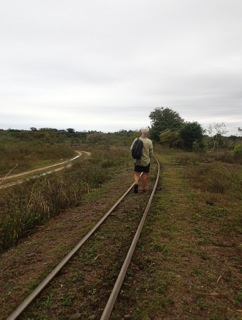
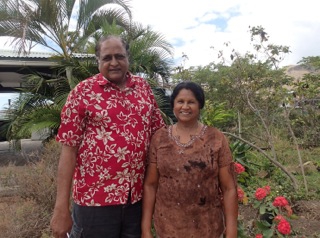
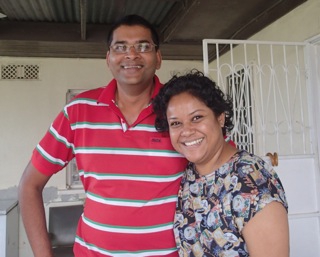
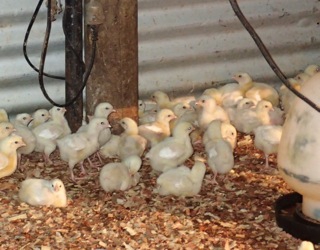
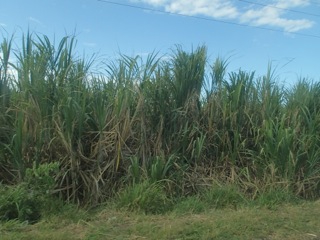
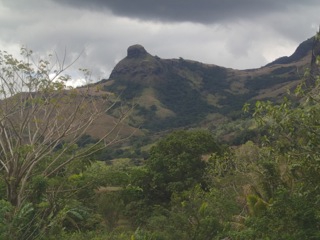
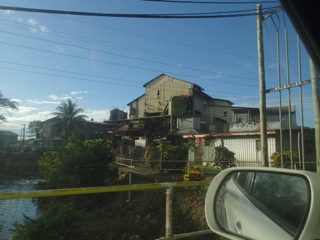
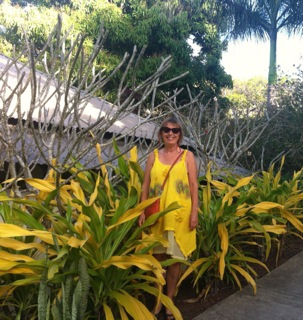
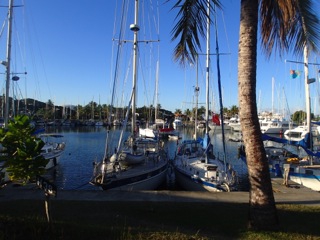
There is 1 Comment
cooking class
Glad you are still having fun, seaweed, fish, taro and coconut, sounds delish.
Thinking of you, have enjoyed the pics, Wendy
Add new comment